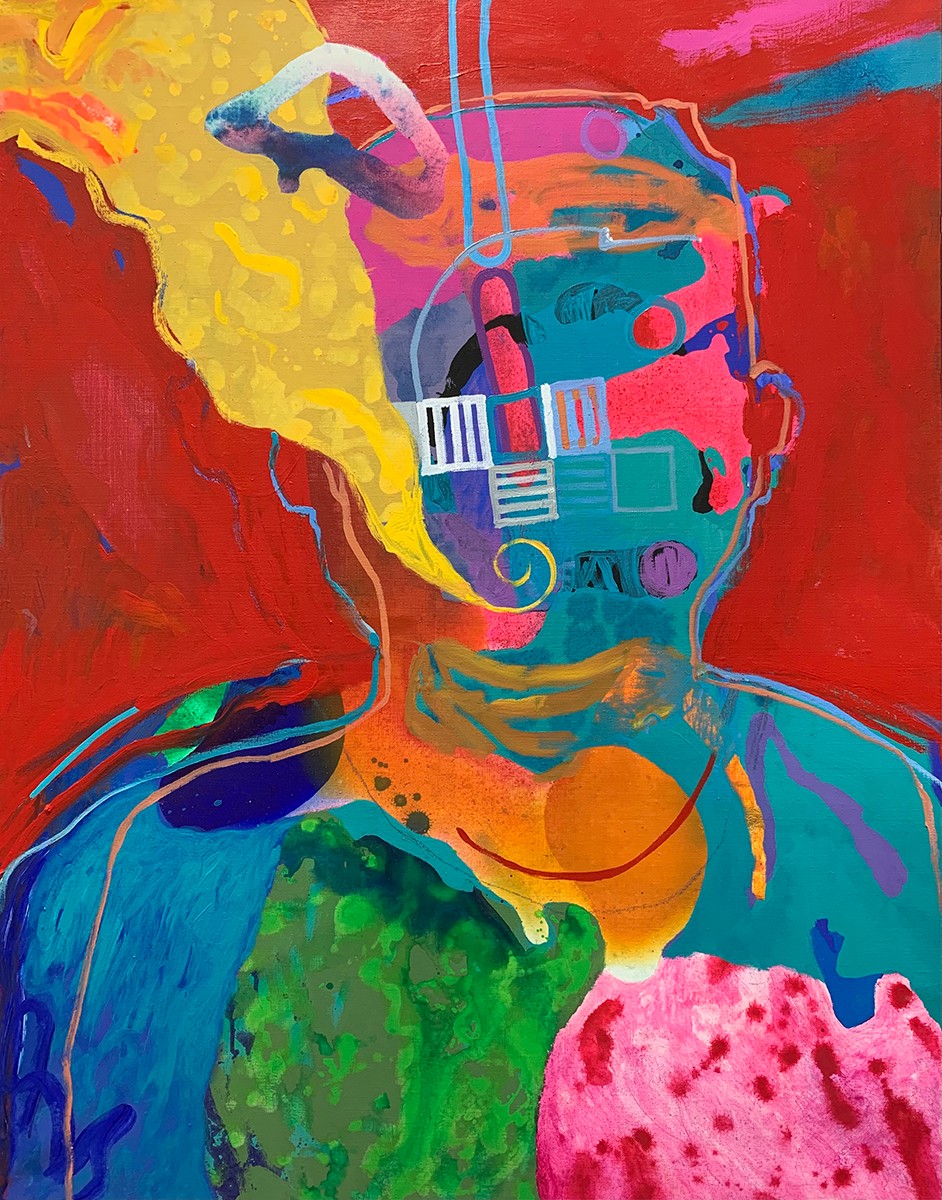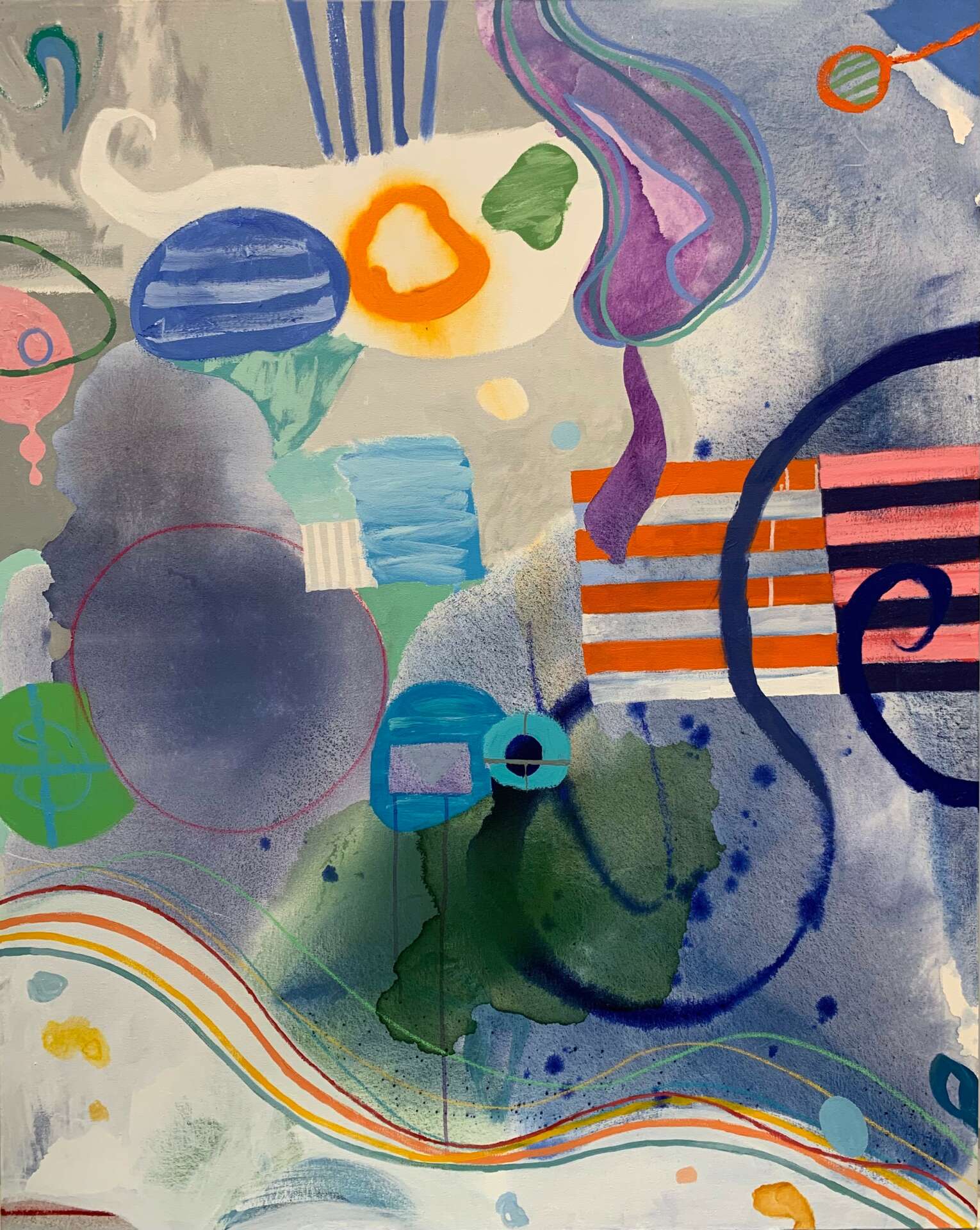We recently connected with Alain Hentschel and have shared our conversation below.
Hi Alain, thanks for joining us today. It’s always helpful to hear about times when someone’s had to take a risk – how did they think through the decision, why did they take the risk, and what ended up happening. We’d love to hear about a risk you’ve taken.
Often people assume that deciding to become an artist is a big risk. The first raised eyebrows come when you divulge the fact that you’ve decided to major in art. I never doubted the skepticism. I more often questioned my own sanity. But through trial and error and attempting different iterations of creative careers (industrial design, illustration, art history), I finally had no choice but to believe that, for better or worse, I could only be an artist – and more specifically, a painter. After graduating from a masters program in painting and drawing at California State University at Long Beach I headed out to travel the world ending up on the island of Rhodes, Greece. That first winter I found a small community of international artists hunkered down in the historic village of Lindos and spent the next two years figuring out what an artist should do. Through connections with friends I made on the island I obtained a two year residency at the Cité Internationale des Arts in Paris. The Cité afforded artists from all over the globe a reasonable living and working space in the heart of Paris and access its many world class museums. It was a time of great personal and professional growth as I was made aware of an opportunity to work with Parsons School of Design which was opening a new campus in the city of light. For the next twenty-two years I taught and assumed increasingly important administrative duties, ending up as director of the Parsons Paris program in my last seven years. The risk of leaving my homeland to discover what the world had to offer turned out to be worthwhile after all…


Alain, before we move on to more of these sorts of questions, can you take some time to bring our readers up to speed on you and what you do?
Meanwhile, as a student of the world I have always felt that travel and even (or especially) living abroad has been of critical value to my work as well as my personal development. I think that for a creative lifestyle, curiosity is often the fuel that propels one forward. My mother was French, my father an American GI. From the beginning of life I was caught between two cultures. As a child I visited my French family often and made connections that hold to this day. I believe that this multicultural upbringing helped me see things from different perspectives early on. It cultivated the flexibility of mind to flip points of view and appreciate other perspectives. This has been very important to my interests as a painter, generating the “what ifs” of exploring alternative solutions to visual problems by way of developing new paths of investigation.
The identity I’ve attached to my professional activity is “Forces At Play.” This common phrase describes situations that are imbued with energy that could go in any direction; north, south, up, down, good, bad…results unpredictable, like electricity or lightning. I want my work to similarly spark curiosity and speculation. While I often have my own ideas about what a work represents (which I try to convey through my titles), I want the spectator to be able to fashion their own ideas of what the work might signify to them in the moment.
Early in my career I worked in oil paint and the imagery was geared to representational work. Surviving financially in the early days in Paris found me painting apartments, often using what are now considered to be quite toxic solvents. It was the prolonged contact I had with these solvents that rendered me ill and eventually made my ability to use oil paint impossible. At that time, a close friend and mentor, Lee Chesney, in leaving his residency at the Cité, offered me his acrylic paints so I could continue my work. The thing that fundamentally changed my approach to painting came from realizing that acrylics could easily accomplish what is much harder to do in oils, such as producing washes and transparencies. Facing blank canvas, I immediately worked these techniques into my initial actions and that practice has since become a staple in originating imagery in all newer work. Over time, my compositions have also become more specific in nature. While subject matter remains non-objective, it is delivered with a higher level of detail and specificity. And, I would be remiss if I didn’t mention my use of color. I have always responded to color and found that intense color contrasts activate the canvas in ways that are transcendent.


What do you think is the goal or mission that drives your creative journey?
The move from freelance artist to working in art education is a well traveled road. It’s the kind of work that keeps you in touch with your craft while allowing just enough time to continue creating. At the same time, being able to share one’s thoughts and ideas with students in order to help them see their own potential became its own mission. In hindsight, I found there was great satisfaction in helping student grow and get better. It always felt like a great collaboration rather than just a dispersion of information. This exercise led to one of the larger revelations about my work as an artist that motivates me to this day. It turns out that the impact of my work is less about self-aggrandizement and more about how my activities as an artist can energize and activate fellow artists or a community. I currently live in a semi-rural town that had once known, but is well past, its glory days. I see it now as a diamond in the rough and am hopeful that through the actions of the many local artists that live in my community there is a real possibility to elevate the cultural awareness of our environs and hence our standing in the context of surrounding cities.
I remain focused on the evolution of my own work, but feel fulfillment of my whole purpose is realized when my mission embraces community enrichment.


What can society do to ensure an environment that’s helpful to artists and creatives?
As we aspire to live in a free and open society it is especially important that the arts are able to express many points of view and comment on the issues of the day. Whatever support society can give to uphold artists’ rights of expression is critical to the smooth functioning of said society and enhances our ability to communicate with one another. Whatever can be done to encourage connections between artists and the public at large is enriching and often eye-opening for all parties.
There are many ways this can be done. In my small town, a group of artists in the community have begun taking on projects that will hopefully engage, entertain and even surprise the public. For instance, in a run-down section of our downtown, large storefronts have gone abandoned. This is a predicament shared by small towns across the country. Our group “Gathering Artists of Putnam” (GAP) has proposed filling the empty windows with artwork until renovation begins. In this way the artists of the community signal an enthusiasm for participating in the revitalization of our town and demonstrate our desire to be full partners in planning and content creation.
Of course, in general, it would be ideal if the general public found a way to support the economy by buying art from local artists. in that way, as much as possible. But in order to make that happen, any outreach through public art, storefronts or impromptu exhibition space, etc. that can be arranged through developers and/or government partners is desirable.
I believe artists must remember that educating their audience needs to be somewhere in the mix, but this can only happen if the public is exposed to the art in the first place.


Contact Info:
- Website: forces-at-play.com
- Instagram: forcesatplay
- Facebook: Alain Hentschel
Image Credits
All photos by the artist, Alain Hentschel.


